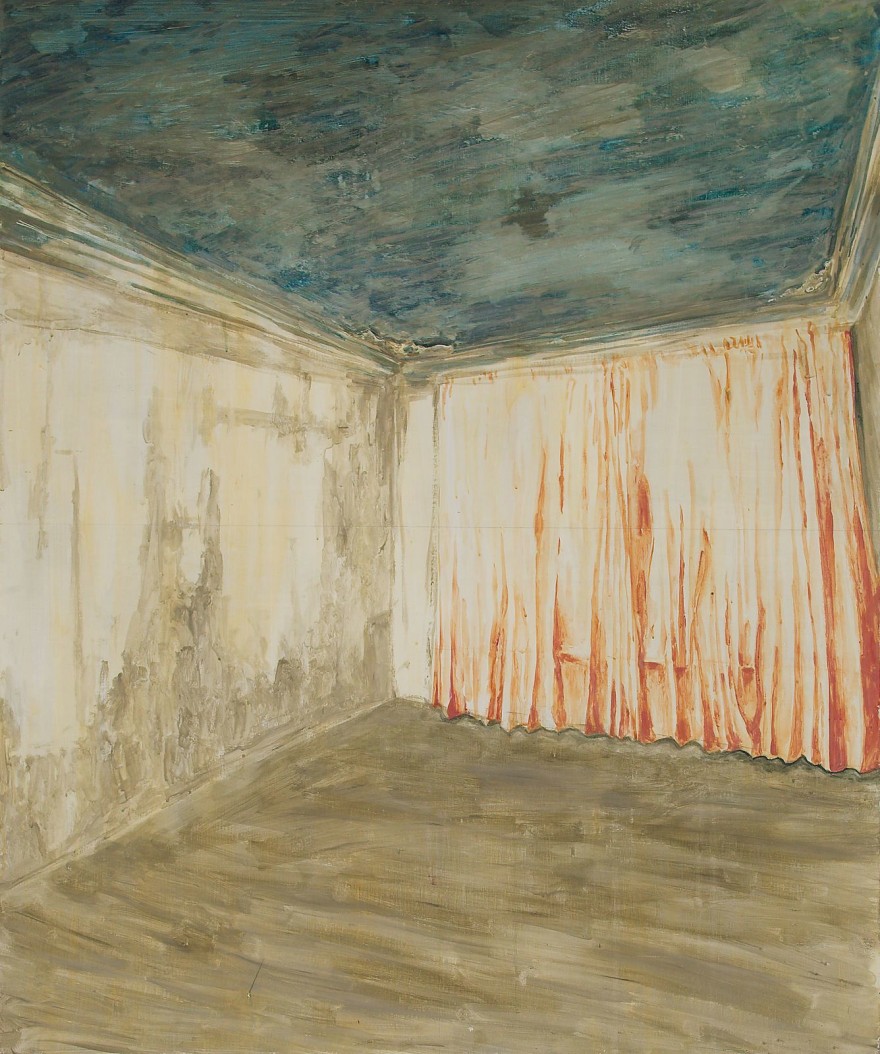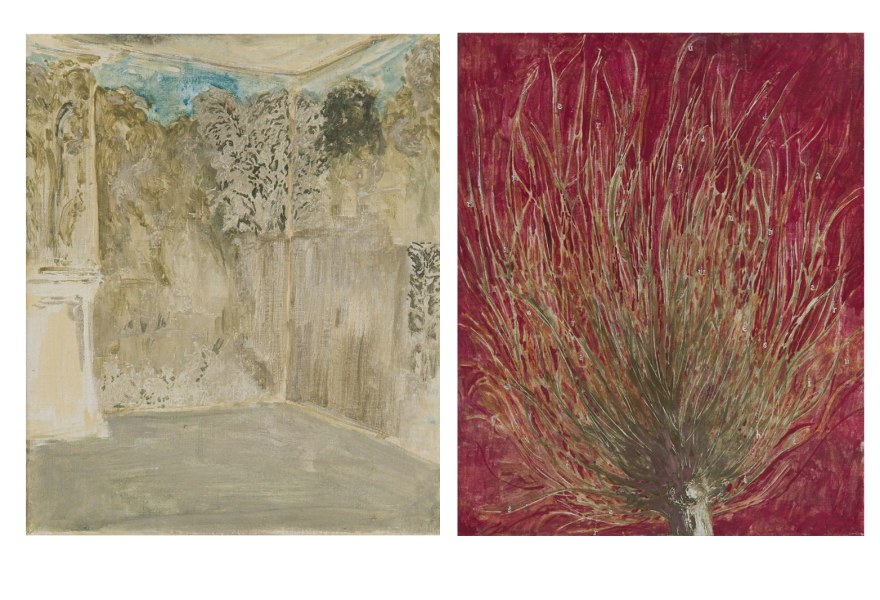24 june 2025, Wouter van den Eijkel
Last chance: Thijs Segers at Fontana
Hogevaart en de bekoring van het kleine (Hogevaart and the Allure of the Small) is the title of Thijs Segers' second solo exhibition at Galerie Fontana. Once again, Segers finds his subjects close to home, but also introduces new forms, such as the Metamorphoses — work composed of multiple interconnected balloons. There are also empty spaces filled with tension.
Hogevaart and the Allure of the Small by Thijs Segers can be seen this week at Galerie Fontana in Amsterdam. The finissage will take place this Saturday between 4 and 6 pm.
In the exhibition text for Hogevaart, Segers describes what he sees when he takes his dog for a walk. "In the evening light, he sees Belgian draught horses grazing in the meadow. Thick tufts of hair like rope fall over the heavy legs with which they drag themselves through the eternal muddy mess. It's quiet and the steam from the cold ground causes knee-high mist." We are in the countryside at a farm near Tilburg.
Thijs Segers (b. 1996) graduated five years ago from AKI ArtEZ in Enschede. He was nominated for the Royal Award for Modern Painting in 2021, 2024 and 2025. He has also exhibited at the Van Gogh House in Zundert, Villa Mondriaan in Winterswijk and the Noordbrabants Museum. Hogevaart and the Allure of the Small is Segers’ second solo exhibition at Galerie Fontana.
Much of the work originates from what Segers observes in his surroundings. The Belgian draught horses, for example, reappear in In the Garden of the Golden Mist. The willow tree from Encounter in the Willow Lane surely exists, but not in red. "Segers does not just paint what he sees," says gallery owner Stefan Heinis, pointing to the work Salle des ponts, a small panel of 25 x 30 cm, predominantly in green and grey tones. "I've been on that veranda and it looks very different in real life."
Weltinnenraum
Segers paints more an impression of a perception. This is also evident from the accompanying text by Kars Persoon: "Just as Rilke speaks of a 'Weltinnenraum' where all things that long to be seen and taken into the observer’s inner world dwell, so does the painter let the image reappear from this Weltinnenraum. The images wish to and can stay with you longer this way."
The impressions escaping from Segers' Weltinnenraum were painted in a palette of muted, heavy colours. White is never entirely white, but rather brownish or greenish. Red has a black undertone. There’s the occasional blue or yellow. For Hogevaart, Segers worked extensively with egg tempera and tempera grassa, giving the colours a matte appearance. This also means that the canvases had to be painted relatively quickly, as tempera dries fast. There was little time for corrections.

Thijs Segers, Decor (Noli me tangere), 2025, Galerie Fontana
Anyone who associates the somewhat archaic title of the exhibition with the language of Gerard Reve is not far off. Like Reve, Segers has an eye for the beauty of decay and transience. As with the self-proclaimed ‘people’s writer’, religious and mystical themes are not absent in Segers' work. The piece Decor (Noli me tangere) is the clearest example of this.

Thijs Segers Chambre du cerf, 2025, Galerie Fontana
Yet this work strongly refers to the spaces once painted by René Daniëls: a back wall with one or two side walls coming forward. As with Daniëls, it is the emptiness of the spaces that conveys the feeling. In Chambre du cerf, for example, we see a wall with red streaks and a dark blue ceiling above. The red, blotchy streaks may or may not be blood. But the tension in the space is almost palpable.

Thijs Segers Figure Ambigüe, 2025, Galerie Fontana
Figure ambigüe
Many of the titles in Hogevaart… suggest a change, directly or indirectly. Again, ambiguity reigns. Sometimes the change is recognisable as such. There is the cracked egg in Figure ambigüe — nomen est omen — but it remains unclear what exactly will emerge from it. The uncertainty increases with the works titled Metamorphose or Metamorphosen. These canvases consist of multiple interconnected elliptical balloons in which something is constantly changing — though what exactly remains unclear.
The metaphysical and mystical are present in other work in which transience in the form of death plays a role. Segers refers to film history. On a canvas not shown in Hogevaart…, Segers painted himself as Death, the character from Ingmar Bergman’s film The Seventh Seal.

Thijs Segers, Rodekamer droom, 2025, Galerie Fontana
In Red Room Dream, we see two owls flying against a red background. One seems to be landing, while the other appears to be diving. To the right, there is a white streak: a beam of light falling between two curtains? It is not mentioned anywhere, but a reference to David Lynch’s Red Room seems obvious. That room functions as a waiting area between two parallel realities. What exactly happens there is never clear — but it is thrilling, just like Segers' paintings.
A self-published catalogue has been created for the exhibition, featuring an overview of the work and textual contributions by Tobias Thaens and Kars Persoon and available for sale at the gallery.
